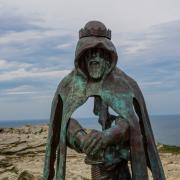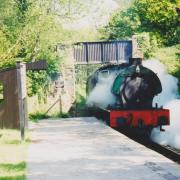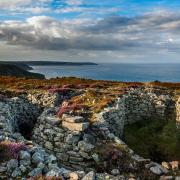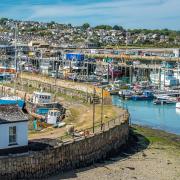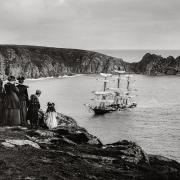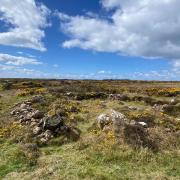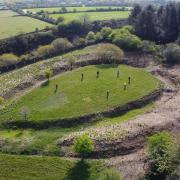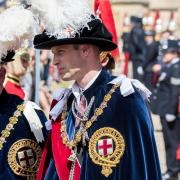Discover the fascinating history of the man who transformed Charlestown, his importance to the local china clay industry, the scandal that befell him, and how he put the ‘Charles’ into Charlestown
Charles Rashleigh (1747-1823) may have died bankrupt and a broken man, but he was also one of Cornwall’s most successful entrepreneurs who in the 18th century bought West Polmear (or West Porthmear), which was then a small fishing village, and transformed it into one of the busiest ports on Cornwall’s south coast.
Rashleigh was a prominent family name in the South West with extensive estates in Cornwall, and Charles was born into the fold at ‘Menabilly’ on November 17, 1747, the house near Fowey that would later become home to Daphne du Maurier.
Rashleigh would become one of the family’s most famous sons, a true entrepreneur who saw that the expanding mining industry around West Polmear afforded excellent opportunities for anyone brave enough to speculate and stick their neck out, which is precisely what he did in buying, then developing what had been a modest village with a few fishermen’s cottages into the port of Charlestown. Minerals were being hazardously transported in boats from West Polmear’s beach and Rashleigh knew that a proper harbour was needed.

We know that he was the seventh son and tenth child of Fowey MP Jonathan Rashleigh and Mary Clayton, that he’d become a solicitor, and that he’d marry Grace Tremayne (c.1744-1820), a native of St Ewe, the marriage occurring in 1776, the year of American independence. It was a coupling that would bestow three daughters. He’d already furnished himself with a newly built Georgian townhouse in St Austell which he purchased in 1774 (this is today the White Hart Hotel). When his father died and elder brother Philip inherited the Cornish estates, it fell to Charles to manage these on his behalf, his career now moving into the fields of land agent, landowner and developer.
It was the mine at Polgooth, southwest of St Austell, that provided the wherewithal for Rashleigh’s Charlestown venture. He’d become a principal partner in the mine in 1783, the prosperity of which caused the growth of St Austell and enabled Rashleigh to use the profits to build Charlestown harbour which could then be utilised to ship the ore.
Construction of the harbour began in 1791 and was completed in 1805. In came supplies, including timber for the local mines, and lime for farmers and out went mined copper and tin.
Rashleigh’s mine would be closed in 1807, however, following a dispute between Charles and the landowner, Lord Arundell, which began as a disagreement over the renewal of Rashleigh’s lease and escalated to the point that the facility was damaged, scaring off potential shareholders in the venture.
This year marks the bicentenary of the death of Charles Rashleigh on March 9, 1823, aged 75. By that time a mere tenant at Duporth, the house he’d previously owned, he was buried in the High Cross Cemetery in St Austell where his grave may still be seen.

Wheal Martyn will host a new, exciting exhibition to commemorate his remarkable life. Working in collaboration with Charlestown History Group, this exhibition will celebrate his legacy and the town he created. Visitors to the museum can discover how, working alongside renowned civil engineer John Smeaton, the ‘father of civil engineering’ and builder of the 3rd Eddystone lighthouse, he designed a new harbour and dock initially to ship copper ore. With this development, Charles’ Town or Charlestown as it came to be known, quickly grew to become one of Cornwall’s largest china clay ports. This ‘white gold’ was originally conveyed by horse wagon from the upland pits through St Austell, and Charlestown continued to export china clay through to the last shipment leaving the port in 1999.
The exhibition also tells the story of the two men who betrayed Charles Rashleigh, Joseph Dingle and Joseph Daniel, and how they left him with no money or property to his name. This is a story with not one baddy but two. One of Rashleigh’s faults seems to have been that he was too trusting. He took Dingle in, an orphan from the workhouse, gave him responsible work at the harbour, superintendent of works no less, only to have him embezzle company money, over £30,000 worth, or some £2.7 million in today’s money. Whilst Rashleigh laboured on his pet project, Dingle recklessly gambled the money away.
Then where was Daniel. Charles helped him become a magistrate, allowing him to have his ‘Duporth Manor’ so that he could look the part, but then had plenty of time to regret this hasty generosity as the now elevated Daniel reneged on a gentleman’s agreement and refused to return the deeds. These betrayals would leave Rashleigh in severely straightened financial circumstances. Maybe Rashleigh got the last laugh though as his legacy lives on with Charlestown remaining today as an unspoilt and unique example of a Georgian port. There’s even a pub named in his honour, the Rashleigh Arms.
The port’s heyday came after Rashleigh, as from the mid-19th century, with mining falling away, it was perfectly placed to be a china clay port and was soon exporting the ‘white gold’ in abundance; this had become a major industry for St Austell and its environs. Consequently, it has become not only popular with tourists, but has also found a new persona. featuring in over 50 film and TV productions, most recently being the setting for Poldark, as well as Jane Austen’s Mansfield Park, Hornblower, Doctor Who and Alice in Wonderland. The port’s 19th century decline proved opportune in the end as Charlestown remained preserved as a relatively unspoilt historic port, a magnet for film crews.

In order to bring history to life children will be welcome to try on their favourite Georgian character outfits and make their own tricorn hat in the dressing up area of the museum. Sian Powell, Exhibition and Engagement Officer, confirmed: ‘This exhibition is our way of celebrating an often-overlooked historic figure who has had a major impact on the Duchy. Charles Rashleigh building Charlestown and helping to empower the burgeoning clay industry shouldn’t be forgotten. It has been 200 years since his death and yet his legacy of Charlestown remains’.
The exhibition will run until Saturday December 23. Entry is included in the general admission fee. For further information, please visit wheal-martyn.com or call 01726 850362.
CHRONOLOGY
1747 – Birth of Charles Rashleigh at Menabilly near Fowey (November 17).
1774 – Buys a Georgian townhouse in St Austell, which is today’s White Hart Hotel.
1776 – Marriage to Grace Tremayne, which would lead to Rashleigh having three daughters.
1783 – Becomes principal partner in the Polgooth mine, profits enabling Charlestown’s rise.
1791 – Begins construction of what will become Charlestown harbour.
1805 – Completion of the harbour works but Joseph Dingle has been embezzling funds.
1807 – Closure or Rashleigh’s mine following a dispute with the landowner, Lord Arundell.
1823 – Death of Charles Rashleigh 200 years ago (March 9) aged 75.




